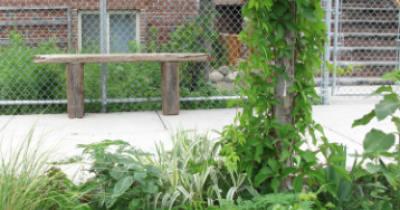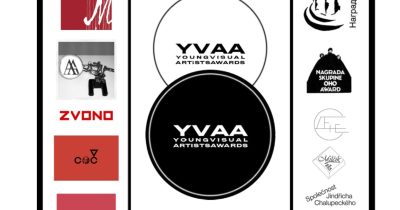The Painter’s Painting?
Is this the Platonic Painter that all painters aspire to emulate?
Is this the one painter that this painter (Wojciech Gilewicz) embodies?
Is this his, Wojciech Gilewicz’s, attempt to embody Everyman (the Painter)?
Or to efface himself?
And ‘Painting’?
Is that the action of putting paint on a canvas?
Or the resulting artifact?
Or the sum total of the paintings the painter paints?
For ‘Painter’, read ‘Artist’. For ‘Artist’, Read ‘Human’.
Or is Gilewicz both subject and object?
Subject, medium, and object.
In the last days of May 2016 we met up outside the Cuchifritos Gallery with Wojciech Gilewicz, and Bartek Remisko – the curator of the artist’s most recent solo show, “Cuboids” – inside the Essex Street Market in the Lower East Side of Manhattan. It took us three hours to travel down from upstate New York. But it took Wojciech and Bartek nearly half that time to travel in by the A train from the Rockaways in the Far East of Queens.
(By the way, Gilewicz’s solo show held in Spring 2015 in the prestigious Foksal Gallery in Warsaw was actually titled “Rockaway”1 ) The notion of New York City being one single place, a single point in space, neglects the whole physical reality of travel. The getting there, being in a bubble, a half-world or zone of uncertainty between tension and boredom, being in a hurry and standing still, whether in a stifling subway carriage or a traffic jam on the FDR East River Drive. Appropriately enough…
Though a painter by training and vocation, Wojciech’s most recent works are video pieces which deal with identity, place, gesture and that peculiarity of travel where the in-between spaces take on their own significant, dominating and particular flavour. The work interrogates this reality. And painting.
WG: “I think that reality (the term itself sounds a little philosophical, or maybe broad, but I like this word because it is ‘normal’) is what we should all care about. Not a simulacrum of reality in the form of art. (Here I wanted to say that we derive greater pleasure from looking at a flower than from looking at a flower in a picture, but I hesitated, because even such simple statements cause far too many problems — well, because, what flower? which artist? What painting? What was the reason/impulse to create this painting? and so on… So we could simplify by stating that art, even this abstract art, always in some sense remains in some relation to reality).”
In unsignalled straight montage, in long static takes, we shift from one anonymous (Asian?) mall, streetcorner, airport or escalator to another. Anodyne, faceless, deracinated slices of idealised eastern-western cityscapes and their peripheries.
Here stands a painter’s easel (unless it’s THE Painter’s easel…), its back facing us, the viewers, the camera, the painter’s eye.
…
Read the full article at ContemporaryLYNX.
—-

“The Travellers”
ZACHĘTA NATIONAL GALLERY OF ART
Pl. Małachowskiego 3
May 14–August 21
With works by twenty-three artists from fifteen countries, “The Travellers” spans space, time, and media. Though its primary motifs may at first seem facile—postcards, trains, and islands all make repeated appearances—the subject matter is consequential. These works reckon with questions of mobility: How can an experience be captured? What constitutes authentic cultural representation? And who has the agency to wander?
Most works are overtly political, like Sislej Xhafa’s Barka (Boat), 2011/2016, a fifteen-foot boat made from shoes found on the beaches of Lampedusa, Italy. The diversity of the empty footwear underscores the heterogeneity of those who are desperate to secure a better life via emigration. Vesna Pavlović’s Fototeka (Photo Archive), 2013/2016, projects images of Josip Broz Tito’s international travels onto a gray synthetic curtain, evoking a contrast between the easy mobility of the Yugoslavian dictator and his captive citizenry. An Ecuadorian bus is festooned with symbols and abbreviations in Dushko Petrovich’s acrylic-on-paper El Oso Carnal (The Carnal Bear), 2013/2016, which presents a personal summary of migrations that define the artist’s life.
Despite the gravity of the topic, humor is still evident. Wojciech Gilewicz’s video Painter’s Painting, 2015, shows the artist working on plein-air paintings in unlikely locations: at a weight-lifting gym, proximate to a food stall, inside a phone booth. Viewers only see the canvas from the back, so there is no confirmation that the artist is actually re-creating these scenes, but no matter––what’s important is the sense of trying to capture a fleeting vista. It’s a gag, but at its core is the legitimate issue of how to see and record the world as we move through it, and as it moves through us.
— Bean Gilsdorf
For original article, visit ArtForum.




